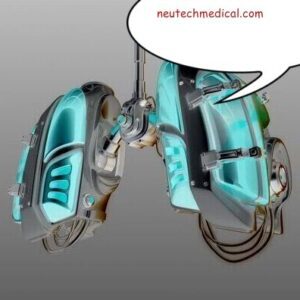Artificial Lung
An artificial lungs is a prosthetic device that provides oxygenation to blood and the removal of carbon dioxide from the blood. It’s intend to take over the functionality of biological lungs for long periods of time.
Artificial lung would a better alternative compare to the heart-lung machine, Extracorporeal Membrane Oxygenation (ECMO) and Mechanical Ventilation (MV) as these can use on a temporary basis only.
Artificial lungs could provide a stopgap for people recovering from severe lung infections or waiting for a lung transplant – although a transplant would still be a better long-term solution for those with permanent lung damage.
Currently, lung transplantation remains the definitive curative treatment for end-stage lung disease, but many patients die before finding an appropriate donor organ.
Artificial lungs could overcome the donor organ shortage and the need for immunosuppression (suppression of immune response after surgery). It would provide physiologic functions through bioengineered conducting airways, vasculature and gas exchange tissue.
ALs are still undergoing human clinical trials and are not yet open to the market but have had successful animal trials.

